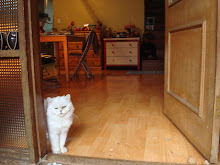 |
| Source: naver/Jaesa Table setting |
It's a Korean New Year called Seolnal (pronounced as: sol-lal). Three days holiday has just kicked off. It is one of the most anticipated and important holidays in Korea after Chuseok. In China, it's celebrated as the Chinese Lunar New Year and people wait for it the whole year. During this time, people visit their hometowns and enjoy the festivities with family members. It's like a family reunion event combined with events very close to those that Muslims experience at the time of Eidul Fitr. Day kicks off with visiting ancestral grave sites. Bowing to the elders and then getting money from them is the same as during Eid. Several Korean games are played and gifts are exchanged amongst family and friends.
Some of the important events during Seolnal are:
New Year’s bow: Saebe/ 세배
One has to bow, paying respect to the elders and expressing thanks. When giving the bow, one should say “Allow me to present you my bow (세배 드리겠습니다)” to be polite. In return, the elders gives words of blessing and money, which symbolize a thriving life for the children.
Ancestral rites: Charae/ 차례 or Jaesa /제사
Ancestral rites is a way to show respect to their ancestors. For that a table prepared with tteokkuk (a rice cake soup /떡국), fruits, sikhye (sweet rice drink 식혜), dried fish, and rice cake is the highlight of the day. It is believed that eating the food after the rites is for the descendants to receive the virtue from their ancestors.
New Year’s dress: Sulbim (설빔)
People wear new clothes to greet the new year. Everybody wears the traditional Korean dress called Hanbok (한복) - that comes in beautiful styles and colors of all age groups.












